Teddyglez1976 - Rincón De Sibaritas

More Posts from Teddyglez1976 and Others
via pinterest

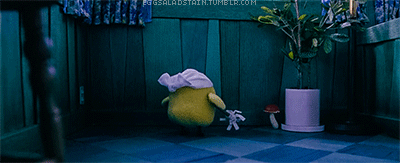


i would die for kiioritori honestly


Mars in a Box: How a Metal Chamber on Earth Helps us do Experiments on Mars

Inside this metal box, it’s punishingly cold. The air is unbreathable. The pressure is so low, you’d inflate like a balloon. This metal chamber is essentially Mars in a box — or a near-perfect replica of the Martian environment. This box allows scientists to practice chemistry experiments on Earth before programming NASA’s Curiosity rover to carry them out on Mars. In some cases, scientists use this chamber to duplicate experiments from Mars to better understand the results. This is what’s happening today.
The ladder is set so an engineer can climb to the top of the chamber to drop in a pinch of lab-made Martian rock. A team of scientists is trying to duplicate one of Curiosity’s first experiments to settle some open questions about the origin of certain organic compounds the rover found in Gale Crater on Mars. Today’s sample will be dropped for chemical analysis into a tiny lab inside the chamber known as SAM, which stands for Sample Analysis at Mars. Another SAM lab is on Mars, inside the belly of Curiosity. The SAM lab analyzes rock and soil samples in search of organic matter, which on Earth is usually associated with life. Mars-in-a-box is kept at NASA’s Goddard Space Flight Center in Greenbelt, Maryland.

This is Goddard engineer Ariel Siguelnitzky. He is showing how far he has to drop the sample, from the top of the test chamber to the sample collection cup, a small capsule about half an inch (1 centimeter) tall (pictured right below). On Mars, there are no engineers like Siguelnitzky, so Curiosity’s arm drops soil and rock powder through small funnels on its deck. In the photo, Siguelnitzky’s right hand is pointing to a model of the tiny lab, which is about the size of a microwave. SAM will heat the soil to 1,800 degrees Fahrenheit (1,000 degrees Celsius) to extract the gases inside and reveal the chemical elements the soil is made of. It takes about 30 minutes for the oven to reach that super high temperature.

Each new sample is dropped into one of the white cups set into a carousel inside SAM. There are 74 tiny cups. Inside Curiosity’s SAM lab, the cups are made of quartz glass or metal. After a cup is filled, it’s lifted into an oven inside SAM for heating and analysis.

Amy McAdam, a NASA Goddard geochemist, hands Siguelnitzky the sample. Members of the SAM team made it in the lab using Earthly ingredients that duplicate Martian rock powder. The powder is wrapped in a nickel capsule (see photo below) to protect the sample cups so they can be reused many times. On Mars, there’s no nickel capsule around the sample, which means the sample cups there can’t be reused very much.

SAM needs as little as 45 milligrams of soil or rock powder to reveal the secrets locked in minerals and organic matter on the surface of Mars and in its atmosphere. That’s smaller than a baby aspirin!
Siguelnitzky has pressurized the chamber – raised the air pressure to match that of Earth – in order to open the hatch on top of the Mars box.

Now, he will carefully insert the sample into SAM through one of the two small openings below the hatch. They’re about 1.5 inches (3.8 centimeters) across, the same as on Curiosity. Siguelnitzky will use a special tool to carefully insert the sample capsule about two feet down to the sample cup in the carousel.

Sample drop.

NASA Goddard scientist Samuel Teinturier is reviewing the chemical data, shown in the graphs, coming in from SAM inside Mars-in-a-box. He’s looking to see if the lab-made rock powder shows similar chemical signals to those seen during an earlier experiment on Mars.
Make sure to follow us on Tumblr for your regular dose of space: http://nasa.tumblr.com



By Jean Marie Carey
Caracalla (born Marcus Aurelius Antoninus in 188), was assassinated on 8 April 217, after nearly 20 years as one of the most reviled Roman emperors. Caracalla had a career of drastic purges and murders, having his numerous real and perceived enemies executed, including his brother Geta in 211. To placate Roman soldiers, he doubled the inheritance tax paid only by citizens.
In 213 he fought the Alamanni and became Germanicus Maximus. Obsessed by Alexander the Great, he raised a Macedonian phalanx and went east in his footsteps, through Asia and Syria to Alexandria, where large numbers who had mocked him were killed. When his offer to marry a Parthian princess was rejected, he attacked Media. While preparing a further campaign he was murdered near Carrhae.
Caracalla oversaw numerous aggrandizing projects. Geta and Caracalla commissioned the construction of the Gymnasium Complex in Sardis, Turkey, which was in use until and through the early Byzantine period. The gymnasium was a huge construction located next to the synagogue in Sardis. The large area adjoining the synagogue on the north was the gymnasium’s palaestra. The eastern facade of the baths was restored between 1964 and 1973.
Caracalla had an equally sumptuous thermae built in Rome, decorated with original Greek sculptures, ornaments, and architectural elements. Because of his notoriety, the emperor was a popular subject, despite a decree of damnatio memoriae, for contemporary and also later artists. Coins bearing his likeness are highly collectible.
Reference: Anthony R. Birley. “Aurelius (RE 46) Antoninus (1), Marcus.” In The Oxford Classical Dictionary.: Oxford University Press, 2012. http://www.oxfordreference.com/view/10.1093/acref/9780199545568.001.0001/acref-9780199545568-e-986.
Gymnasium Complex, ca. 161-211; ruined circa 7th century; baths restored 1964-1973. Sardis, Turkey. Nr.s R50630177and R50630430. Shmuel Magal, Sites and Photos.
Herakles Farnese, Roman copy of a Greek original 330-320 BCE. Recovered from Baths of Caracalla, Rome, now in Museo nazionale di Napoli
Gioacchino Altobelli, Ruins of the Thermae of Caracalla, albumen print photographs, ca. 1865. George Eastman House, Rochester, New York.
Denarius with Caracalla (Spätrömischer Kontorniat), ca. 200. Münzkabinett, Staatliche Museen zu Berlin, Nr. 92.073.
Bull rhyton (black steatite; wooden horns originally gilded) from Crete: Second Palace Period. ca. 1400 BCE. From the Roman Baths of Caracalla. The Archive for Research on Archetypal Symbolism, Nr. 18082.
Portrait head of the Emperor Marcus Aurelius Antoninus (called Caracalla), ca. 230. The Metropolitan Museum of Art. Nr. 40.11.1a.
Further Reading: Janet DeLaine. The Baths Of Caracalla: A Study In The Design, Construction, and Economics of Large-Scale Building Projects In Imperial Rome. Portsmouth, Rhode Island: Journal of Roman Archaeology, 1997.
Clare Rowan. Under Divine Auspices: Divine Ideology and the Visualisation Of Imperial Power In The Severan Period. Cambridge: Cambridge University Press, 2012.


Details from Venus and Her Satellites, 1835.
William Etty (British, 1787-1849)
Oil on panel
👑👑👑

The Mummy of Queen Hatshepsut
The Mummy of Hatshepsut was found by Howard Carter in KV60, in the Valley of the Kings. While assembling all unidentified mummies with their right arms placed across their chests a royal posture for the Egyptian Mummy Project, some were studied with a CT-scan machine.
At the same time a canopic box from the Deir el-Bahri cachette that was inscribed for Hatshepsut and contained her liver was also scanned. There was also a tooth inside, a molar with a root; and when examined it was found that it fitted exactly into the mouth of one of the royal women.
After analysis of Hatshepsut’s mummy, it was concluded that she had died at about the age of fifty, that she had been obese, and that she had diabetes and cancer. The box that contained the tooth is also on display near the mummy.
Now in the Egyptian Museum, Cairo.
Found out that Stash teas have a decaf chai so life is real good right now!!

Ball Scene - Walter Heimig
Dedicado a los finos amantes de las bellas artes y el estilo exquisito del buen comer.
145 posts